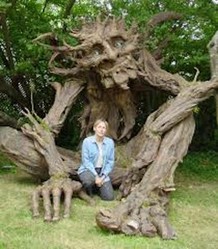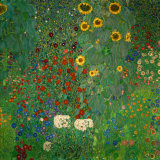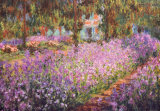Enjoying the outdoors can take many forms. You can take a walk, go on a hike, go jogging along trails and more. But, some outdoor activities can take the form of artwork composed from what you see in nature, such as trees and bushes. These types of natural and artistic projects have a name – Arborsculpture.
While not new – Arborsculpture has been around for hundreds of years – it has taken off in recent years and with the advent of the Internet the designs and beauty of Arborsculpturists have been made available to a wider audience.

Arborsculpture Designs Are Beautiful And Practical
Arborsculpture is an old technique that has found new devotees. Here's a primer on how to get started creating useful items out of trees and bushes you grow.
What is Arborsculpture?
If you aren’t familiar with the term, Arborsculpture is a method used to grow and shape tree or other plants into useful and practical household or community items, such as chairs, park benches, arbors, etc. They can also be formed into freestanding pieces of art. You might think of it as something akin to bonsai or other plant pruning art that goes back thousands of years. But, arborsculpture – although it is just as ancient – is a whole lot more. Its growing popularity as an eco-friendly way of building structures is catching on as a great way to utilize what nature already provides.
Researchers have found that certain species of trees could grow in air (aeroponically) instead of the more traditional way in soil and water. Since trees grown aeroponically don’t harden they can be formed into many shapes some of which are very practical, like chairs. And, researchers are even exploring the idea of building Arborsculpture structures as big and as purposeful as actual homes. Yes, people could actually live in them.
DIY Projects
There are several projects you could easily undertake yourself with common tools such as hand pruners and a pruning saw or shears. More advanced Arborsculpture work might need hedge trimmers, loppers, wood board, pipe, rope, wire, string, tape and other items. But the beauty of Arborsculpture is that anyone can do it and it doesn’t take a great deal of investment to get started. And the notion of creating something so purely natural is a heady experience. You can actually watch something grow that you planted, nurtured and molded into something artistic, beautiful and purposeful.
For those who need an added boost of creativity to get started there are even online tutorials on how to create various items. Arborsculpture expert Richard Reams has detailed plans and has posted them at arborsmith.com and has written a book on the subject, Arborsculpture - Solutions for A Small Planet.One of his items is a homegrown chair. For this he takes up to 12 flexible saplings and plants them in a pattern. He bends them to form a frame around several metal rods in the shape of a chair. The rods hold the trees in place for a few years until the tree takes the desired shape on their own (along with some pruning).
Grow a Boat?
How about something a little less homebound … like a boat that you can take onto the lake during a leisurely fall afternoon? Yes, a boat. Reams has taken long ash trees that have natural arches at their ends. The ash trees form the bottom of the boat. Then he plants other trees between the “ribs” of the boat formed by the ash trees. Although it took him eight years to complete the build, the “boat” was placed in water and off it went.
Another ambitious project is a spiral staircase, perhaps as a fun way to get from tree house to ground or even from a house’s first floor to second. One of Reams’ projects uses a pair of oak trees that spiral around each other and makes for a handy and unique stairway.
Peace Plant
Less practical, but very meaningful is growing a “peace symbol.” For this Reams took a tree with five branches that had been cut. He took two outside branches and formed them into a circle. Then he took a branch pointing upward and tied it to the top of the circle. He then grafted the branches together and as they grew they formed the peace symbol.
There are many other “art” arborsculpture pieces that can be formed. How about a fall harvest willow baskets, or a cornucopia or hanging baskets that can contain seasonal flowers and plants, decorative items, or even low-heat lighting elements can easily be created.
The forms that arborsculpture can take are limited only by your imagination – and of course, time. Blending your artistic inclinations with an outdoor “green” hobby, this could be a family project as well.
So, the next time you have friends over, invite them into your garden to have a seat at a table and chairs that you grew.
You might also like
Can You Make Money With Online Surveys?Taking online surveys can make you a handy amount of money - but it's not goi...
Home Remodeling Contracts – Tips and Precautions: It’s Always ...If you need to hire a contractor for work there are a number of things you ne...
Disasters And Pets: Are You Ready To Aid Your Pet When An Emer...Are you ready to take care of your pet in a natural disaster or emergency. He...












 The Problem With Wizzley and Amazon Associateson 10/17/2014
The Problem With Wizzley and Amazon Associateson 10/17/2014
 Happy Wife, Happy Life: Is It True?on 10/02/2014
Happy Wife, Happy Life: Is It True?on 10/02/2014
 The Religious And Immoral Actson 09/23/2014
The Religious And Immoral Actson 09/23/2014
 The Age Factor And Online Surveyson 09/21/2014
The Age Factor And Online Surveyson 09/21/2014




Comments
Revisiting your wizzley brought to mind two questions that I'd meant to ask at the first reading.
What tree species is arbor-sculpted into the fanciful seated figure, and what is the source of the image?
TheWriting Cowboy, How do arborsculptors factor in natural decline in woody plants? Do you know if anyone yet has arborsculpted a house? If not, perhaps a tree house is a sustainable place to start.
I've never seen an arborsculpture, although I've seen hedges shaped into animals and other designs. Some people are so creative.